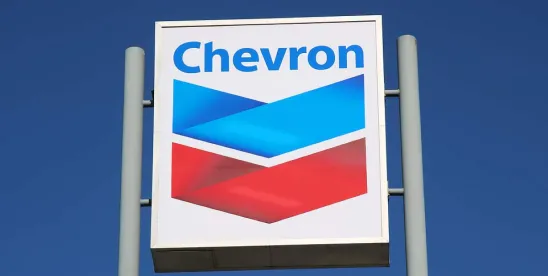The United States Supreme Court recently issued two consequential administrative law opinions that place new limits on federal regulatory agencies. In Loper Bright Enterprises v. Raimondo,[1] (“Loper Bright”) the Court overturned the “Chevron doctrine” which required courts to defer to agency interpretations of ambiguous provisions in their organic statutes.[2] Meanwhile SEC v. Jarkesy (“Jarkesy”)[3] held that the Seventh Amendment to the United States Constitution entitles defendants in fraud cases seeking civil penalties brought by the Securities and Exchange Commission (“SEC”) to a jury trial. Jarkesy therefore prohibits the SEC from adjudicating fraud cases before its Administrative Law Judges (“ALJs”).
This analysis focuses on the impacts that Loper Bright and Jarkesy are likely to have, and are already having, on the Federal Energy Regulatory Commission (“FERC”). Our firm has prepared separate summaries of: (i) the Loper Bright decision, its reasoning, and its implications for environmental regulation;[4] and (ii) the Jarkesy decision and its implications for the SEC.[5]
Chevron Repeal’s Impact on FERC
The end of Chevron deference has had an immediate impact on certain FERC proceedings. As discussed below, these include: (i) an unusual public dispute between two Commissioners concerning Loper Bright’s implications for a major FERC rule; and (ii) a Supreme Court order vacating a notable D.C. Circuit decision on FERC’s regulation of Qualifying Facilities (“QFs”). At the same time, Loper Bright is less likely to affect most routine FERC proceedings because they tend not to involve the kind of statutory interpretation questions to which Chevron deference previously applied. Loper Bright is most likely to come into play in matters where FERC seeks to pursue new policy objectives, or to address new technologies, which are not clearly addressed by its enabling statutes.
Loper Bright Will Likely Have A Limited Impact on “Routine” FERC Matters
It is uncommon for Chevron deference to be implicated by FERC decisions because they usually do not turn on interpretations of ambiguous statutory language. FERC’s rulings typically involve policy determinations or factual findings that receive judicial deference not because of Chevron, but because the Administrative Procedure Act (“APA”) specifies that they are to be reviewed under the “arbitrary and capricious” standard.[6] The APA standard pre-dates Chevron, and Loper Bright expressly recognized that it continues to apply.[7] Under arbitrary and capricious review, a FERC decision will generally be overturned only if FERC clearly exceeds its statutory authority, wholly fails to engage in “reasoned decision-making,” or neglects to offer a rational explanation for its determinations.[8]
Many FERC cases involve the application of statutory language in the Federal Power Act (“FPA”) and Natural Gas Act (“NGA”) specifying that rates and terms of service or proposed actions must be “just and reasonable,” not “unduly discriminatory,” or in “the public interest.” These are legal terms of art that had established meanings in utility law before the FPA and NGA were enacted in the 1930s. The FPA and NGA authorize FERC to apply those standards in agency decision-making. In Chevron terms, the statutes expressly delegate authority to FERC to make policy decisions within the bounds of the statutory standards.
FERC has now interpreted the FPA and NGA standards for nine decades, and courts were deferring to these interpretations since well before Chevron. As Loper Bright acknowledges, Congress has often enacted statutes that “expressly delegate[]” to an agency the authority to give meaning to a particular statutory term” or that “empower an agency to prescribe rules to “fill up the details” of a statutory scheme,” or “to regulate subject to the limits imposed by a term or phrase that “leaves agencies with flexibility . . . such as ‘appropriate’ or ‘reasonable’.”[9]
Thus, reviewing courts can be expected to continue to construe the term “just and reasonable” as a flexible standard that is not only intended to provide FERC with equitable discretion, but is also “obviously incapable of precise definition.”[10] The judicial test for “unduly discriminatory” actions is likewise well-settled and should not be affected by the reversal of Chevron.[11] Accordingly, FERC’s decisions applying the “just and reasonable,” “undue discrimination,” or “public interest” standards to matters within the scope of FERC’s statutorily established jurisdiction do not involve the interpretation of “ambiguous” statutory language. Loper Bright therefore should not result in courts showing less deference to FERC decisions applying those standards.
Chevron Repeal Is Prospective-Only
The immediate impact of Loper Bright on FERC is also diminished by the fact that the Court’s ruling is expressly prospective in nature. The Court did “not call into question prior cases that relied on the Chevron framework. The holdings of those cases that specific agency actions are lawful—including the Clean Air Act holding of Chevron itself—are still subject to statutory stare decisis despite our change in interpretive methodology . . . Mere reliance on Chevron cannot constitute a ‘special justification’ for overruling such a holding, because to say a precedent relied on Chevron is, at best, ‘just an argument that the precedent was wrongly decided.’”[12]
Consequently, past FERC determinations that relied in part on Chevron deference have not been overturned by Loper Bright. For example, FERC’s seminal open-access transmission rule from the 1990s (i.e., Order No. 888), a major rule from the late 2000s regarding transmission planning (i.e., Order No. 1000), and a rule revising FERC’s regulations governing “qualifying facilities” (“QFs”) (i.e., Order No. 872) were upheld in part based on Chevron deference. Loper Bright does not affect these rulings or past FERC decisions applying them.
Loper Bright Has Already Affected Some FERC Matters and Will Likely Impact FERC Actions Involving Future Statutory Interpretations
There are notable ongoing FERC matters that have already been affected by the end of Chevron deference. The highest profile is FERC’s recently issued Order No. 1920, which adopted major new requirements for electric utility transmission planning. When Order No. 1920 was announced in May, FERC Commissioner Mark Christie issued a lengthy dissent. Christie argued, among other things, that Order No. 1920’s legal justification depended on an earlier D.C. Circuit ruling upholding Order No. 1000. Christie asserted that Orders 1920 and 1000 were sufficiently different that the Commission’s reliance was “grossly misplaced” on the merits.[13] He also argued that “Order No. 1000 was built on what may be a foundation of sand known as ‘Chevron deference.’” Immediately after Loper Bright was issued, Christie released a new statement reiterating that Order No. 1920 is “not entitled to Chevron deference in any form” because “it goes far beyond Order No. 1000 by claiming legal authority that Congress has never granted.”[14] He suggested that:
The Commission can wait for a court to strike [Order No. 1920] down – now far more likely given today’s Supreme Court decision doing away with Chevron deference – or it can respond to those many petitions asking for rehearing or amendments with a new opportunity for amendments. . . . . I hope that this Commission, with its new lineup of commissioners, will be willing to work on amending Order No. 1920 into something that can actually work in the field and is within our legal authority, which the current version is not.”
On July 1, FERC Chairman Willie Phillips released his own statement. Phillips had previously co-authored a concurrence defending Order No. 1920 against Christie’s criticism.[15] He argued that nothing in Loper Bright should call into question FERC’s jurisdiction over transmission planning, or its authority to adopt the regulatory changes adopted by Order No. 1920.[16] Phillips insisted that Order No. 1920’s determinations were reasonable on their merits and thus should be upheld notwithstanding the end of Chevron. He also emphasized that the Supreme Court has established that FERC’s FPA jurisdiction applies to all practices that “directly affect” jurisdictional transmission service and that this principle must encompass transmission planning.[17] It remains to be seen how FERC will respond to the pending requests for rehearing of Order No. 1920.
Chevron is also implicated in the appellate proceedings arising from FERC’s rulings in Broadview Solar, LLC.[18] That case had to do with the federal law defining the maximum permissible size of solar QFs. The relevant statute establishes that such QFs must be “small facilities,” i.e., they must not have a “power production capacity” greater than 80 MW. The dispute concerned the Broadview facility, which included a 160 MW solar array, a 50 MW storage facility and an 80 MW inverter (which restricted the amount of power that could actually be delivered to the grid). The parties agreed that the meaning of “power production capacity” was ambiguous in this context. FERC ultimately concluded that the QF’s power production capacity did not exceed 80 MW because that was the maximum amount that it could “send out” to the grid due to the limit imposed by the inverter.
The United States Court of Appeals for the D.C. Circuit, citing Chevron, deferred to FERC’s interpretation.[19] In dissent, Judge Walker rejected what he characterized as the majority’s “Chevron maximalism.” He argued that the Court should not have deferred to FERC’s interpretation and reached his own conclusion that Broadview was not a “small facility:” “[because] Broadview can produce 80 megawatts for its inverters while it simultaneously produces 50 megawatts for its battery, Broadview’s facility is capable of producing more than 80 megawatts of power. So it is too large to be a “small facility.’”
A national utility trade association petitioned for certiorari based in part on objections to the D.C. Circuit majority’s application of Chevron deference. FERC asked the Supreme Court to hold the case in abeyance pending the outcome of Loper Bright. On July 2, the Court, on its own motion, summarily disposed of the petition by vacating and remanding the D.C. Circuit’s decision.[20] The matter must now be reconsidered by the D.C. Circuit in light of Loper Bright.
Loper Bright may also impact pending challenges to FERC’s decision to limit incentive rate availability to utilities that join a “Regional Transmission Organization” (“RTO”). Section 219(c) of the FPA states that FERC “shall . . . provide for incentives to each transmitting utility or electric utility that joins a [RTO].” FERC subsequently adopted a “voluntariness” requirement that prevents utilities that joined RTOs in compliance with state mandates from receiving the rate incentive. Petitions for review in the United States Court of Appeals argued that FERC had no authority to add a voluntariness requirement under the express text of Section 219(c). On July 1, one of the petitioners formally advised the Sixth Circuit of the Loper Bright decision and asked that the court not to defer to FERC’s interpretation of Section 219(c).
The cases discussed above exemplify how the end of Chevron deference is most likely to come into play in instances where existing statutory language must be applied to novel policy questions or to new technologies. In such cases, the loss of Chevron deference will make FERC decisions more vulnerable to challenge. It may also make FERC more cautious about asserting that its existing authority empowers it to pursue new policy objectives that are not expressly addressed by statutory text. The Supreme Court’s recent application of the “major questions” doctrine in West Virginia vs EPA, which broadly holds that agencies should not address new “major” new policy questions absent express authorization from Congress, is likely to reinforce this impact.
Jarkesy’s Impact on FERC ALJs:
Jarkesy held that the SEC could not require defendants to submit to administrative proceedings when the SEC seeks civil penalties for claims of securities fraud. The Seventh Amendment grants a defendant in such proceedings the right to a jury trial, unless an exception for certain “public right” cases applies. Jarkesy held that the Seventh Amendment applied to the SEC proceedings, and it narrowly defined the scope of the public right exception such that it will be more difficult for agencies to rely on the exception to use non-jury proceedings in many cases involving statutory violations.
Jarkesy’s Seventh Amendment Ruling and FERC ALJs
Like the SEC, FERC uses ALJs for various purposes. ALJs conduct hearings and issue initial decisions on numerous issues, including market manipulation cases arising under the FPA and NGA. The FPA’s and NGA’s market manipulation provisions are modeled on, but are not identical to, the those administered by the SEC. The NGA does not expressly give respondents an opportunity to have the factual and legal issues in market manipulation cases decided in federal district courts,[21] although the FPA does.[22]
Thus, the immediate effect of Jarkesy will likely be efforts to prohibit FERC from directing ALJs to conduct hearings in natural gas market manipulation cases. Justice Sotomayor’s Jarkesy dissent specifically described FERC “can pursue civil penalties only in agency enforcement proceedings.”[23] In Justice Sotomayor’s words, “[f]or [FERC] and countless other agencies, all the majority can say is tough luck; get a new statute from Congress.”[24] Unless FERC finds a way to reinterpret the NGA it may lose its ability to pursue NGA market manipulation matters unless the NGA is amended.[25] The Jarkesy ruling underscores the contrast between enforcing the filed rate doctrine and the imposition of penalties for a punitive purpose.[26]
Questions Regarding FERC ALJs that the Supreme Court Left Unanswered
Jarkesy did not resolve all of the legal questions presented to it concerning ALJs at the SEC or at FERC. The Supreme Court was reviewing a 2022 Fifth Circuit ruling that the SEC’s use of ALJs was unconstitutional for reasons beyond the Seventh Amendment.[27] Specifically, the Fifth Circuit Jarkesy Decision found that: (i) “Congress had violated the non-delegation doctrine by authorizing the SEC, without adequate guidance, to choose whether to litigate this action in an Article III court or to adjudicate the matter itself;” and (ii) “the insulation of the SEC ALJs from executive supervision with two layers of for-cause removal protections violated the separation of powers.”[28] Amicus briefs filed in the Supreme Court Jarkesy proceedings argued that these alleged Constitutional defects also applied to FERC ALJs.
The Supreme Court did not reach these questions because it concluded that the resolution of the Seventh Amendment question was enough to decide the case. But that action does not mean that the Fifth Circuit Jarkesy Decision’s holdings on the other constitutional issues were overturned. If the Fifth Circuit’s Jarkesy Decision’s rulings were to be applied to FERC in the future, those rulings could invalidate the use of ALJs beyond natural gas market manipulation cases, such as in utility or pipeline rate cases or pipeline certificate proceedings.
Some parties have already contended that the Fifth Circuit Jarkesy Decision should broadly invalidate FERC’s use of ALJs. For example, in one ongoing proceeding, FERC initiated ALJ-administered hearings to consider whether companies that FERC accused of making false statements should be subject to millions of dollars in penalties. The companies challenged FERC’s use of ALJs in that matter in federal district court on multiple constitutional grounds. After the Fifth Circuit Jarkesy Decision, the district court stayed the FERC proceedings pending the Supreme Court resolution of the case. It remains to be seen what action the federal district court, or FERC, will take now.
Similarly, in 2023 a party argued that FERC should set aside an order upholding an ALJ’s initial decision in a traditional electric utility rate case because FERC’s ALJ proceedings were “unconstitutionally insulated from the President’s control by multiple layers of removal protections,” allegedly violating the President’s obligation under the “Take Care Clause” of Article II of the U.S. Constitution to “take Care that the Laws be faithfully executed.”[29] The party also argued that FERC ALJs were appointed in a manner that was inconsistent with the Appointments Clause under Article II of the U.S. Constitution.[30]
In August 2023, FERC rejected these arguments. In particular, FERC asserted that its ALJs were differently situated from the SEC’s because they were appointed exclusively by FERC’s Chairman,[31] whereas SEC ALJs were appointed under the terms of the APA.[32] FERC also claimed that its order approving certain ALJ findings while overturning others had cured any possible constitutional defect associated with the ALJ’s appointment. Finally, FERC noted that the Commissioner had voted in December 2022 to ratify the original appointments of all of FERC’s ALJs to the extent that such ratification was required.
Commissioner Christie concurred, noting that he would have preferred to reject the constitutional arguments on procedural grounds because they had been raised for the first time on rehearing. He did not necessarily agree with the majority’s reasoning, including, “any claim or insinuation that the action of the Commission last December in reappointing the Commission’s ALJs fully cured any hypothetical constitutional infirmities.”[33] Then-Commissioner Danly concurred with the majority that FERC ALJs were distinguishable from SEC ALJs by virtue of being appointed solely by the Chairman. But he dissented because he disagreed that FERC could do anything after the fact that might validate or ratify any ALJ appointments that might have been unlawful.[34] In his view, if it were to be found that the ALJ in the case had been appointed unconstitutionally, then the only remedy was a new hearing before a new ALJ.
Petitions for review of the August 2023 Order were filed in the Fifth Circuit and are still pending. Thus, no court has addressed the August 2023 Order’s reasoning. In addition, the same arguments that the August 2023 Order rejected were raised again in a different Commission docket later in 2023 and have not yet been addressed.[35]
In short, it seems likely that the Commission will have to again confront, in the relatively near future, the constitutional questions regarding the use of ALJs that arise from the Fifth Circuit Jarkesy Decision but that were not addressed by the Supreme Court. It is not clear how FERC will respond or what courts will make of its actions. This is especially true because FERC’s composition has changed substantially in 2024--with only Chairman Phillips and Commissioner Christie remaining and three new Commissioners seated since the time of the August 2023 Order.
If you have any questions about the issues discussed herein, please reach out to one of the Hunton AK attorneys designated as “Contacts” on these issues.
[1] Loper Bright Enterprises v. Raimondo, Case No. 22-451, slip op. (June 29, 2024) and Relentless v. Dep’t of Commerce, Case No. 22-1219, slip op. (June 28, 2024). For convenience, the two opinions are referred to together as Loper Bright herein.
[2] The “Chevron” doctrine was established in Chevron U.S.A., Inc. v. Natural Resources Defense Council, Inc., 467 U.S. 837 (1984) (“Chevron”).
[3] SEC v. Jarkesy, Case No. 22-859, slip op. (June 27, 2024) (“Jarkesy”). Hunton Andrews Kurth LLP represented Mr. Jarkesy in an earlier challenge to the SEC proceedings in the United States District Court for the District of Columbia.
[4] SCOTUS Overrules 40-Year-Old Chevron Doctrine Reshaping Future Environmental Regulation.
[5] Supreme Court Limits SEC’s Use of In-House Administrative Proceedings.
[6] 5 U.S.C. §§ 551–559.
[7] See Loper Bright, slip op. at 12 (noting that the APA requires that “judicial review of agency policymaking and factfinding be deferential.”)
[8] See, e.g., Motor Veh. Mfrs. Ass'n v. State Farm Ins., 463 U.S. 29, 43 (1983) (“an agency rule would be arbitrary and capricious if the agency has relied on factors which Congress has not intended it to consider, entirely failed to consider an important aspect of the problem, offered an explanation for its decision that runs counter to the evidence before the agency, or is so implausible that it could not be ascribed to a difference in view or the product of agency expertise.”).
[9] Loper Bright, slip op. at 17.
[10] Morgan Stanley Cap. Grp. Inc. v. Pub. Util. Dist. No. 1 of Snohomish Cty., Wash., 554 U.S. 527, 532 (2008).
[11] See, e.g., Mo. River Energy Servs. v. FERC, 918 F.3d 954, 958 (D.C. Cir. 2019) (“[U]ndue discrimination occurs only if the entities are ‘similarly situated,’ such that ‘there is no reason for the difference.’” Id. (noting that FERC has “wide discretion to define “undue discrimination.”).
[12] Loper Bright, slip op. at 34 (citations omitted).
[13] Commissioner Christie made various arguments on this point which were rooted in his view that Order No. 1000 confined itself to procedural reforms to transmission planning and exercised a “light touch,” but that Order No. 1920 contained multiple substantive mandates meant to advance the development of clean energy resources that were disguised as procedural reforms. See Order No. 1920, 187 FERC ¶ 61,068 (2024) (Christie, Comm’r, dissenting).
[14] Statement, Mark Christie, Commissioner, Federal Energy Regulatory Commission, Commissioner Mark Christie’s Statement Concerning Order No. 1920 and U.S. Supreme Court’s Overruling of Chevron Deference (June 28, 2024), https://www.ferc.gov/news-events/news/commissioner-mark-christies-statement-concerning-order-no-1920-and-us-supreme.
[15] See 187 FERC ¶ 61,068 (joint concurrence of Phillips and Clements, Comm’rs).
[16] Statement, Willie Phillips, Chairman, Federal Energy Regulatory Commission, Chairman Willie Phillips’ Statement Concerning Order No. 1920 (July 1, 2024),https://www.ferc.gov/news-events/news/chairman-willie-phillips-statement-concerning-order-no-1920-0 (“Phillips Statement”).
[17] Phillips Statement at P 2, citing FERC v. Elec. Power Supply Ass’n, 577 U.S. 260, 277-79 (2016).
[18] See Broadview Solar, LLC, 172 FERC ¶ 61,194 (2020), set aside, 174 FERC ¶ 61,199 (2021), reh’g denied and modified, 175 FERC ¶ 61,228 (2021).
[19] See Solar Energy Industry Ass’n v. FERC, 59 F.4th 1287 (D.C. Cir. 2023).
[20] Edison Elec. Inst., et al. v. FERC, et al., cert. granted., No. 22-1246 (July 2, 2024).
[21] See 15 U.S.C. § 717n.
[22] FPA Section 222 addresses market manipulation. It expressly provides respondents in market manipulation cases with an opportunity to obtain de novo review of the facts and law in federal district court under FPA Section 31. The NGA does not contain a parallel provision.
[23] Jarkesy, (Sotomayor, J dissenting, slip op. at 35).
[24] Id.
[25] In the past, FERC has read the relevant NGA provision as requiring that ALJs, not trial courts, be the fact-finders in natural gas market manipulation cases. It is unclear whether FERC would re-interpret those precedents to allow for jury trials, or whether courts would defer to such a re-interpretation in the aftermath of Loper Bright.
[26] See, e.g., Ark. La. Gas Co. v. Hall, 453 U.S. 571, 578 & n.8 (1981) (explaining that the Commission may not impose the “retroactive substitution of an unreasonably high or low rate with a just and reasonable rate” and “in particular, may not order reparations”) (citations omitted).
[27] Jarkesy v. SEC, 34 F.4th 446 (5th Cir. 2022) (“Fifth Circuit Jarkesy Decision.”).
[28] See Jarkesy, Case No. 22-859, slip op. at 6 (summarizing the Fifth Circuit Jarkesy Decision’s determinations.).
[29] See La. Pub. Serv. Comm’n v. Sys. Energy Res., Inc., 184 FERC ¶ 61,097 at P 123 (2023) (“August 2023 Order”) (summarizing arguments).
[30] See August 2023 Order at P 127 (summarizing Article II argument).
[31] Unlike other administrative agencies, section 401(c) of the Department of Energy Organization Act specifically enumerates “the appointment and employment of hearing examiners” (i.e., ALJs) as the first unique power that differentiates the FERC Chairman from all other FERC Commissioners. 42 U.S.C. § 7171(c).
[32] August 2023 Order at P 131.
[33] August 2023 Order at P 5 (Christie, Comm’r, concurring).
[34] See id. (Danly, Comm’r, concurring in part, dissenting in part).
[35] System Energy Resources, Inc., Respondents’ Motion to Dismiss and Answer to Complainants’ “Amended and Revised Complaint,” Docket No. EL24-5-000 at 82-84 (Nov. 22, 2023) (arguing that any hearing before a FERC ALJ would be unconstitutional because of violations of the Take Care and Appointment Clauses.).








 />i
/>i

